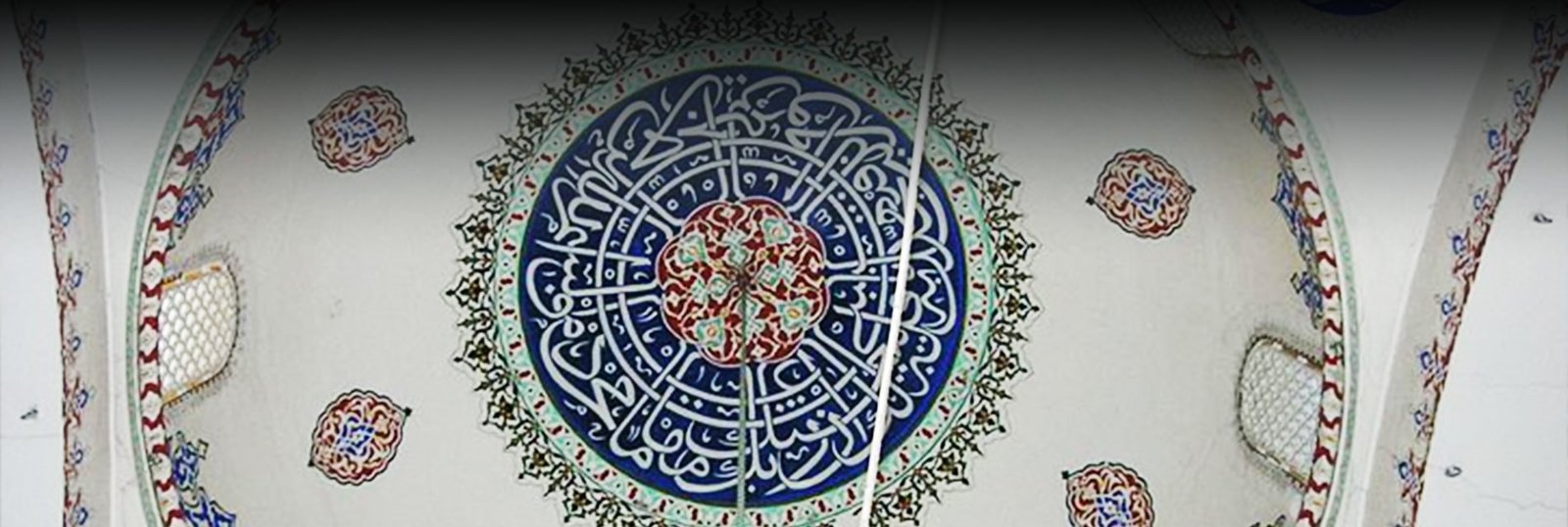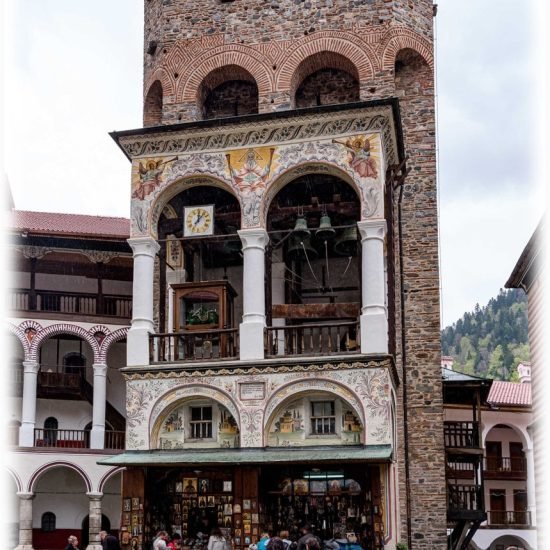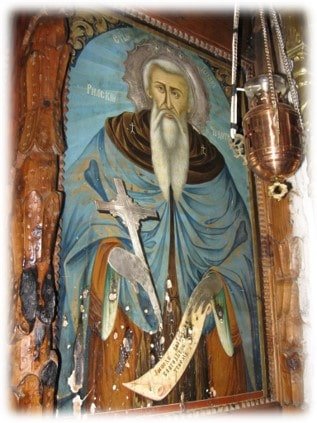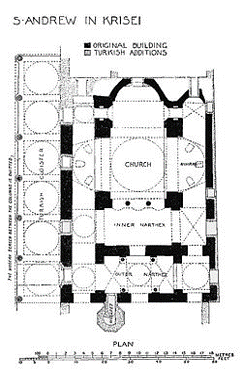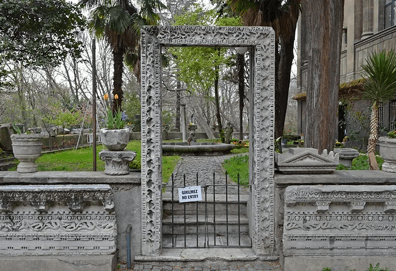Andrew en te Krisei
per person
The monastery of Saint Andrew (the Apostle) was allegedly founded at early 5th century by Arcadia, sister of Emperor Theodosius II (r. 408–450) near the Gate of Saturninus in Constantinople. By 792 it was converted into a nunnery and after the end of Iconoclasm it was rededicated to Saint Andrew of Crete who was killed in 766 for his opposition to the iconoclastic policies of Constantine V (r. 741–775). The church was probably rebuilt by Basil I (867-886) as it was damaged during Iconoclasm.
At the end of 13th century, Theodora Raoulaina, niece of Michael VIII Palaiologos (r. 1259–1282) and famous scholar, rebuilt the monastery and the church. The nunnery had a library, where part of the foundress’ book collection was stored. The nunnery is mentioned throughout up to the Fall of Constantinople (1453). An Early Ottoman source, a survey of the city dated 1455 calls it Kızlar Kilisesi («women’s church») comprising a gate and five one- and two-stored houses. Between 1486 and 1491 it was converted into a mosque.
FORMAL ANALYSIS
The building was originally of the ambulatory type with a central dome and three apses. In the west side it had an esonarthex and exonarthex. The entrance was on the north side where the Ottomans built an arcade with five domes.
However, after an earthquake in 1766, the church underwent many alterations in the central dome (circular inside, octagonal outside) whereas two half domes were added north and south of the main dome.
The inner narthex is divided into three bays with an Ottoman dome on the north one. Byzantine are the vaults on the central and south bay. The outer narthex has five bays which are separated from each other either with columns or pilasters. They are surmounted by groined vaults and central saucer domes. The current exterior of the building is Ottoman. From the Byzantine monastery survives an underground cistern southeast of the mosque.
In addition, a Byzantine carved door frame (6th century) is now in the Istanbul Archaeology Museum (see also the image gallery). Finally, from the 12th-13th centuries has survived a polychrome wood carving representing Christ seated on a throne.
EKATERINI MITSIOU
- ANDREW EN TE KRISEI © PHOT. https://en.wikipedia.org/wiki/Koca_Mustafa_Pasha_Mosque
- ANDREW EN TE KRISEI ©PLAN OF THE MOSQUE, AFTER VAN MILLINGEN, BYZANTINE CHURCHES OF CONSTANTINOPLA, 1912, https://en.wikipedia.org/wiki/Koca_Mustafa_Pasha_Mosque
- DOOR FRAME FROM THE CHURCH (ISTANBUL ARCHAEOLOGICAL MUSEUM © PHOT. https://www.thebyzantinelegacy.com/andrew-krisei
- KOCA MUSTAFA MOSQUE (INTERIOR) © PHOT. https://www.thebyzantinelegacy.com/andrew-krisei
- KOCA MUSTAFA MOSQUE CULUMNS (INTERIOR) © PHOT. https://www.thebyzantinelegacy.com/andrew-krisei
- KOCA MUSTAFA MOSQUE CULUMNS (INTERIOR) © PHOT. https://www.thebyzantinelegacy.com/andrew-krisei
- CENTRAL DOME (OTTOMAN ERA) © PHOT. A. FABBRETTI, CC BY-SA 4.0, https://fr.wikipedia.org/wiki/Mosquée_Koca_Mustafa_Pacha#/media/ Fichier:KocaMustafaPashaMosque20072812_01.jpg
Tour Location
Andrew en te Krisei
| Other monuments and places to visit | Many Byzantine remains in the city |
| Natural Heritage | |
| Historical Recreations | |
| Festivals of Tourist Interest | |
| Fairs | |
| Tourist Office | |
| Specialized Guides | |
| Guided visits | |
| Accommodations | Various hotels in the city |
| Restaurants | Various restaurants in the city and in the neihbourhood |
| Craft | |
| Bibliography | |
| Videos | |
| Website |
| Monument or place to visit | Saint Andrew en te Krisei (today Koca Mustafa Pasha Mosque) |
| Style | Late Antiquity, middle and late Byzantine and Ottoman |
| Type | Monastic architecture |
| Epoch | 6th c and13th / Ottoman |
| State of conservation | Good condition |
| Degree of legal protection | |
| Mailing address | |
| Coordinates GPS | 42°26′46″N 6°34′14″O |
| Property, dependency | |
| Possibility of visits by the general public or only specialists | It is a mosque |
| Conservation needs | Yes. Some recent restoration took place where crosses and monograms on the columns were covered |
| Visiting hours and conditions | As it is a mosque, the visiting hours depend on the prayer schedule |
| Ticket amount | |
| Research work in progress | No. The monument lacks an extensive study |
| Accessibility | Easily accessible |
| Signaling if it is registered on the route | Not yet registered. |
| Bibliography | -Alexander Van Millingen, Byzantine Churches of Constantinople. London 1912 -Raymond Janin, La Géographie Ecclésiastique de l'Empire Byzantin (= 1. Teil: Le Siège de Constantinople et le Patriarcat Oecuménique, Band 3 Les Églises et les Monastères). Paris 1953 Wolfgang Müller-Wiener, Bildlexikon Zur Topographie Istanbuls: Byzantion, Konstantinupolis, Istanbul bis zum Beginn des 17. Jahrhunderts. Wasmuth, Tübingen 1977 |
| Videos | Youtube |
| Information websites | 3dmekanlar.com wikipedia.org thebyzantinelegacy.com |
| Location | Istanbul district of Fatih, in the neighborhood of Kocamustafapaşa |


